So what's wrong with fish?
by David Ogilvie
Longline fishing
In the 1980s, longlining became an increasingly popular method of fishing, partly in response to the increasing demand for high-quality, high-value fish destined for the clientele of upmarket restaurants.
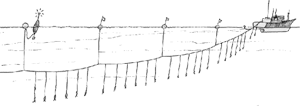 |
During line setting, longliners set a
single line up to 150 km long behind
the boat. Attached to it are literally
thousands of baited hooks. An
estimated one billion hooks are set
annually by the world's longline fleets.
Many nations have fishing vessels engaged in longlining, but the fisheries of particular concern are those targeting southern bluefin tuna and patagonian toothfish. |
| |
|
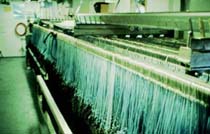
|
Seabirds, such as albatross, often scavenge for food behind longlining boats and try to eat the bait from the hooks as they are set behind the boat. Some birds swallow the hooks and are dragged underwater and drown. Until recently, more than 300,000 seabirds were killed this way each year. In fact, twenty-six species of seabird, including seventeen species of albatross, became in danger of extinction because of longlining.
Because of the large number of birds affected, commercial fishing has been identified as the most serious threat to the survival of most albatross species. In Australia, the incidental capture of seabirds on longlines is listed as a Threatening Process under the Commonwealth Endangered Species Act, and many of the seabirds, such as albatross and giant petrels, that fall victim to longlines are listed as endangered or vulnerable. |
| |
|
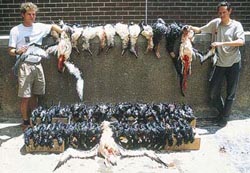 |
Many cheap and simple methods for reducing the number of birds caught have been, and are being, developed, and international agreements and regulations have been developed to encourage their use. But many fishing vessels still operate illegally. These Illegal, Unregulated and Unreported (IUU) vessels, are responsible for killing thousands of seabirds each year.
This haul of dead seabirds (mainly white-chinned petrels) is from one fishing trip by a single fishing vessel. |
Bottom trawling
Bottom trawling and other mobile fishing gear have effects on the seabed that resemble forest clearcutting, but affect an even larger area. Trawling crushes, buries, and exposes marine animals on the seabed, destroying habitat by plowing about half the world's continental shelf - roughly 150 times the forest area clearcut - each year.
- Elliott A. Norse, Ph.D., President, Marine Conservation Biology Institute.
Trawling usually involves dragging a large beam or heavy weights across the ocean floor. These hold the mouth of a large net open while "tickler chains" or roller gear in front of the net scour the ocean bottom, flushing out organisms hidden in the sand. The net then scoops up virtually every living thing in its path. Trawling is so efficient and effective that some biologists have compared it to forest clearfelling.
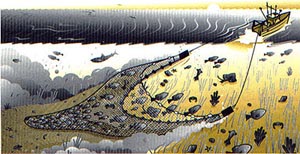 |
Because trawling takes place at the bottom of the sea, its effects are largely unseen, but studies have shown that it is having a huge impact on our oceans. Pictures of sea floors after trawling reveal what looks like a paved highway where there was once a thriving ecosystem. And although trawling used to be confined to shallow waters, modern gear allows fleets to drag waters up to two kilometres deep. |
| |
|
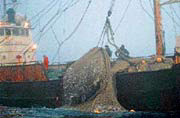 |
Bottom trawling occurs on continental shelves in all the world's oceans. Estimates are that up to 15 million square kilometres of ocean bottoms are now trawled annually. Globally, the total area trawled is 150 times the forest area that is clearfelled each year.
A large portion of the world's trawling fleet drags for shrimp, but it is also a common method to harvest scallops, clams, crabs and bottom-feeding fish. |
Perhaps the most disturbing aspect of trawling is the high rate of incidental catch ("by-catch"), including undersize specimens. This method of fishing is very indiscriminate, scooping up both target and non-target species.
|
|
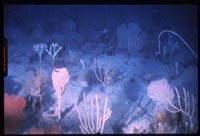
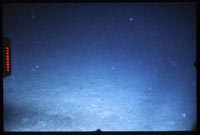
|

